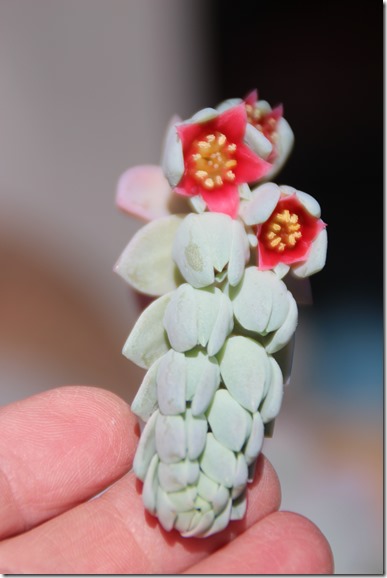I am still learning to identify pachyphytums from other succulents, and I am still not sure I am right every time. I bought this one back in the days when I didn’t bother to keep the ID tag, so I had to do a little investigating to come up with a name. I think it is either a p. bracteorosum or p. oviferum.They make this interesting little bloom cluster on that long bloom stem.
-
-
But I also like their fat, fleshy leaves, which is how they get their name. Pachys is Greek for thick; phyton means plant, so there you go.
Cuttings from the parent plant root easily and leaves that break off will make a new plant as well. You do have to be patient with the leaves, however, as it takes a good while for the little new plant to form at the end of the leaf. As an example, since I don’t have a pachyphytum leaf right now, I share this shot of a leaf from a ghost plant, a graptopetalum . it follows the same process. Just lay it on the surface of the dirt in any plant or just on a shelf where it gets some sun and leave it alone. And wait.
But pachyphytum is a good plant to add to you collection. It does grow a little slow, but if you give it the light and water it needs, plant several rosette together, give it plenty of light and water about once a week and not constantly watch it, and one day you will come in a it will fat and filled out, and you will love it.
Good luck.






Recent Comments